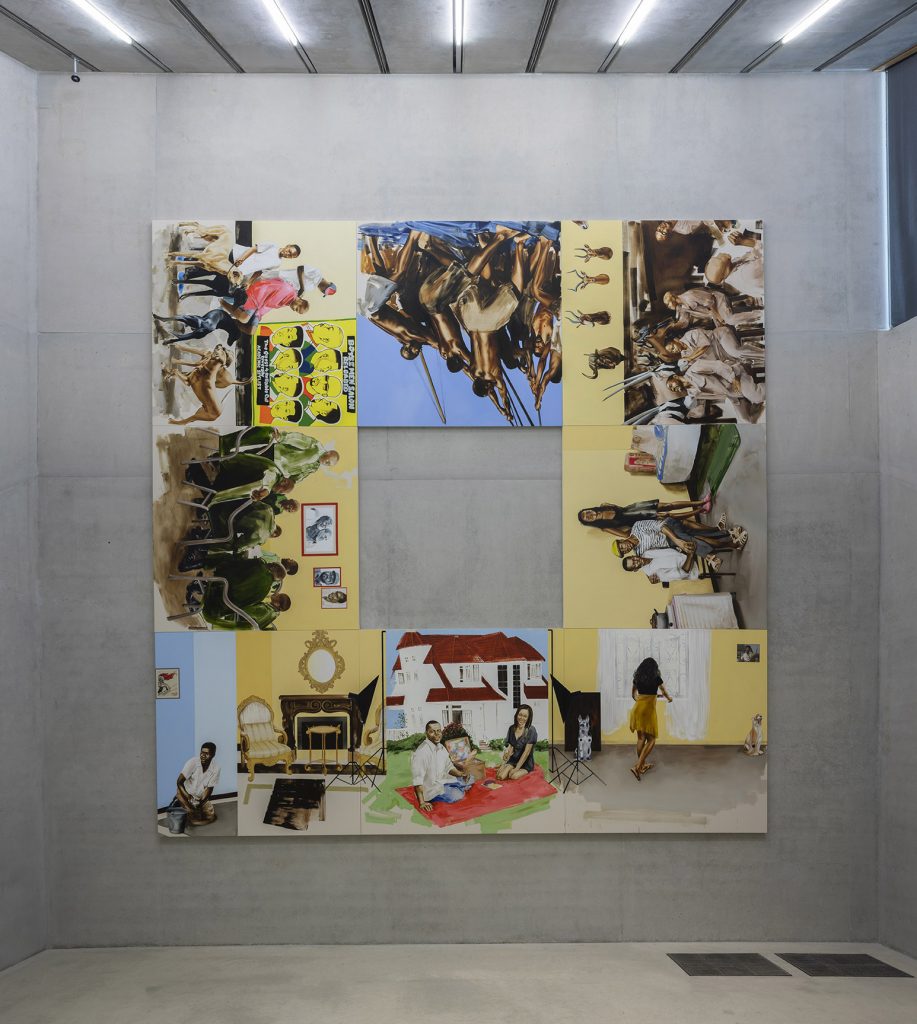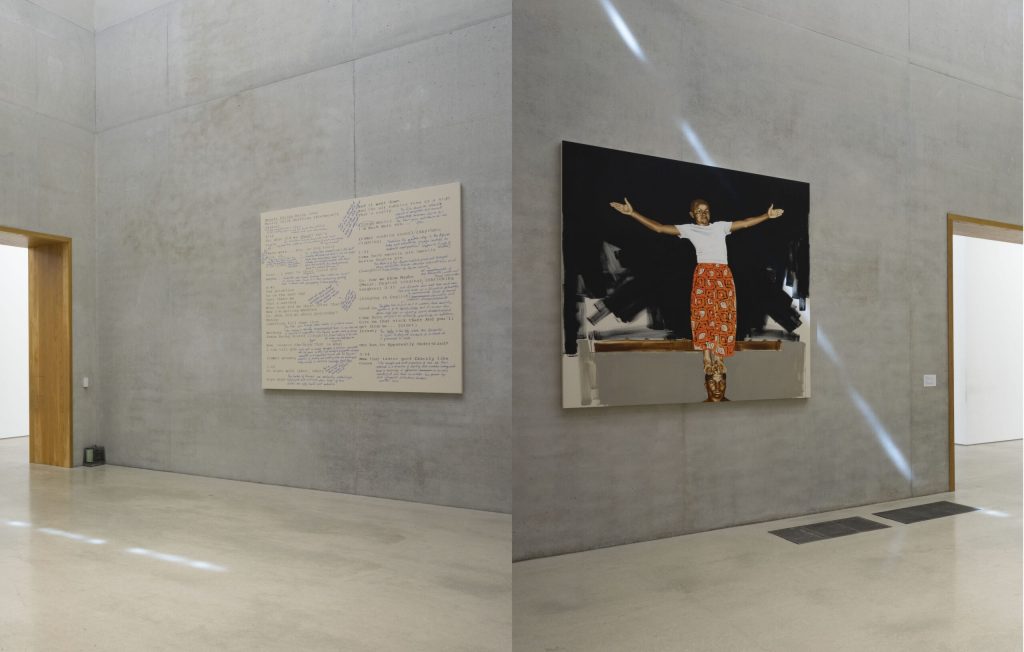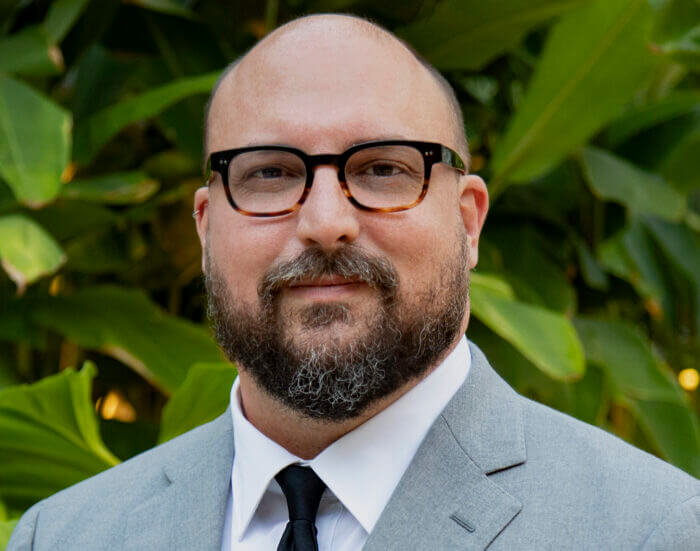FRONTRUNNER Meets PAMM Curator René Morales

René Morales is the director of curatorial affairs and chief curator of the Peréz Art Museum Miami (PAMM), having joined the museum as a curator in 2005. A Miami native, he studied undergraduate at Swarthmore College, Pennsylvania, and received a Master’s in Art History from Brown University, Rhode Island. He has previously worked at the Museum of Art, Rhode Island School of Design. In his role at PAMM, he has overseen a number of significant acquisitions and organised a vast array of curatorial projects.
FRONTRUNNER spoke to Morales about creating shows for a uniquely Miami-based audience, the challenges facing the museum during the COVID-19 pandemic, and the vital core of maintaining artist relationships.

Installation view
Pérez Art Museum Miami (PAMM), 2020-21
Copyright Meleko Mokgosi
Courtesy the artist and Jack Shainman Gallery, New York
Photo credit: Oriol Tarridas
Your role at PAMM involves being very attuned to what’s going on in Miami, and its place within the wider culture. As a native, what do you think is important to keep in mind about the city?
I know this city very well, it is in my bones. When I create shows for PAMM, my main aim is to keep in mind how complex our audience is. There are a lot of preconceptions of Miami as this city for spring breakers, full of beautiful people and that whole reductive Miami Vice thing, but there is a really diverse and significant Latin American contingent here, spanning people from places like Chile, Colombia, the Caribbean and more. Because of that, the Latin American question informs pretty much every decision we make here on the most minuscule to the largest scale. As the demographic has become more complex, it has really enriched the city, and we have to address the fact that our audience could include people who have never been to an art museum before.
We present international contemporary art, but we have a duty to represent that broader scope to the people in our city. Most of our materials are catalogued by local people and we take great care to make sure all our materials are translated into Spanish very clearly. It’s not just about showing Latin American art, but more about interpreting and representing things through the lens of Miami in a way that feels relevant and resonant.
You spent a fair amount of time away from Miami before taking the job at PAMM, though. Do you think it was important to leave home in order to come back and serve it effectively?
I was away in the north east for about 14 years. When I went to Swarthmore and Brown, both institutions had an emphasis on rigour, research and writing which has been central to my work ever since. That experience and the quality of the education were very important to me, and being away from Miami provided a useful perspective on the city I would end up serving. Being outside really made clear to me that the conceptions of Miami shared by locals are different from those held by folk outside of it, and addressing that discrepancy has been really productive for me.
At the same time, something that is important for people in Miami, and something I feel we are fulfilling at the museum, is to think about our museum in light of the international art scene and through that there is a balance between local and global perspectives that can help to resolve things.
So, your latest project unveiled was an exhibition of work from Meleko Mogosi called Your Trip to Africa. He’s an artist from Botswana, so not immediately tied to Miami. What was the importance for you of bringing his perspective to PAMM?
I’ve always liked his work and have presented it to our commissioning council before. Before deciding to do this exhibition, I simply went on a studio visit because I was impressed with how his work has developed technically and conceptually in the last few years – I really think he’s hitting his stride right now. At the visit, we got talking about this film from 1966 called Our Trip to Africa by the experimental Austrian filmmaker Peter Kubelka, where he was commissioned by a wealthy Austrian family to record their safari trip through Africa. When you commission a guy like Kubelka, you’re going to get something intense and this film has come to be seen as a critique of the family and also European colonialism and tourism in Africa in a general sense. Mogosi had a really strong, unique perspective on this that I had not encountered before as someone both from Africa himself while also understanding that outsiders’ gaze as he is now based in New York.
This deeper way of thinking about the film, which I’ve been obsessed with for a while, really comes through in the exhibitions. We’ve got pieces where transcripts relating to theories, critiques and interviews surrounding the film have been annotated by the artist. There’s an opportunity to listen and read between the lines on this film that is really powerful. I knew even though the project isn’t specifically tied to Miami, those thoughts around tourism would be very resonant with our audience.

Installation view
Pérez Art Museum Miami (PAMM), 2020-21
Copyright Meleko Mokgosi
Courtesy the artist and Jack Shainman Gallery, New York
Photo credit: Oriol Tarridas
Unfortunately the exhibition, which launched at the end of February, can’t be accessed right now as PAMM, and pretty much every other museum, is closed due to the coronavirus pandemic. How do you think this has impacted on your ability to make sure the work gets a good airing?
Luckily, this particular project was going to be up for a year and a half. It’s scheduled to stay until May 2021, but maybe we’ll extend it even further – we’re still working that out. Our space is very intense, with this huge, intimidating back wall and a double-height ceiling in the gallery, so we tend to leave exhibitions running in there for a long time.
Essentially, we are looking to extend all of our shows. We had another one running called Polyphonic which showcases a selection of African American art we have acquired over the past six months, and its run will definitely be extended.
How else has the pandemic impacted on your and your team’s process?
It’s taken major adjustment. We are a very tight-knit bunch and it’s been challenging to not just be able to walk to each other’s desks and move around organically. This way of working is much more structured, but there are certainly benefits to that. A switch to digital was sort of already something we were working on – we hired a new director of digital engagement to create an online framework for the museum and they actually didn’t start until after lockdown came in. The pandemic has caused us to rethink not just our own output, but also prompted us to see the artworks themselves in different ways. Even the pieces you’re familiar with can take on a while new meaning in the current situation, so we’re looking at initiatives that play on the idea of art having a different punch or signification in this new world.
What’s been keeping you motivated through it all?
We’re always so busy and this crisis means people have more time and desire to check out digital content online, so I’m really excited about how we might commit and adapt to this cultural change. On a personal level, it’s been the bonding experience with my family. Before the crisis, you could be with your partner or your kid and not be so focused on them all the time because you’re caught up in the rat race but it’s been great just being home and really talking to those people that matter to you – that’s what’s getting me through this.
Another thing it’s got me thinking about is artistic production in Miami itself. One effect of the crisis is that it has made material what we’d call our ‘community’ – it has made that word much less abstract. It’s clear who your community is when they are missing, even just the guy at the gas station or the person who takes your parking ticket. That’s brought me back to my love for Miami-based artists and kept me focused on helping those folks, turning back towards the local economy and certainly the local art economy.

Chief Curator & Director of Curatorial Affairs, Pérez Art Museum Miami (PAMM)
Community and collaboration strike me as very important to your professional philosophy. Can you articulate how that informs on your approach to your work?
The heart of curatorial practice is the relationship with the artist, in my opinion. I like to make a point of doing as much research into an artist’s work as I can before making first contact. I think it’s a show of respect that you dedicate that time and effort to engage them on their work. It’s key to remember how deeply invested artists are in what they are producing.
It’s hard to describe my philosophy about that relationship in any one single way. As much as you can put the research in, not everyone can connect and you can’t have that with every artist. But it’s vital with respect to the end product – the exhibition, the group show, whatever it is – to show that the relationship has been productive. I think the artwork takes on a certain charge or spark when the relationship between a curator and and artists has been productive and vital.